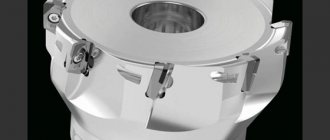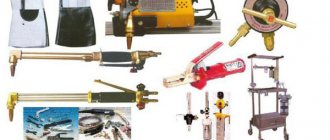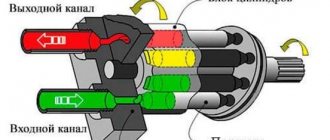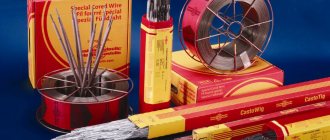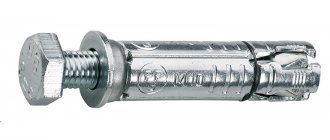When processing metals by cutting or plastic deformation, a large amount of heat is released. As a result of heating the working tool and the workpiece surface, the quality of processing deteriorates, the wear of expensive tools and equipment increases, and the structure of the surface layers of the workpiece metal changes. This, in turn, leads to a decrease in performance properties and quality of final products.
To prevent the listed manifestations and improve the quality of surface treatment of the workpiece, special cooling technical means are used - COTS.
According to their state of aggregation, COTS are divided into gaseous, liquid, and solid.
The most widely used liquid coolants are cutting fluids (cutting fluids).
Cutting fluid (coolant)
– a special substance used in the operation of metal processing machines. Each technological process of a turning or milling machine is accompanied by friction, which can lead to deformation of the workpiece, breakdown of an expensive machine or its part, and a change in the mechanical properties of the metal.
The main purpose of coolant for metalworking is to separate surfaces subject to friction and reduce the temperature of the tool. This fluid forms a lubricating film on the working surfaces, which reduces friction and the force required for cutting. The introduction of special additives into the composition of the product simplifies the cutting process - liquid molecules quickly penetrate microcracks on the metal surface and, as it were, drive a wedge between its particles.
Composition of coolant (COTS)
The composition of most metalworking coolants is approximately the same. In products of different manufacturers and names, only the concentration of a particular substance or additive needed by a specific process or metal changes.
Effective coolant for machine tools includes:
- lubricants made from natural or synthetic oils,
- additives with various performance properties,
- substances that prevent the separation of cutting fluids into fractions,
- anti-corrosion and wear-reducing components,
- additives that reduce foaming and aggressiveness towards processed metals.
There is quite a large amount of material about cutting fluids (cutting fluids), however, we would like to briefly summarize all the critical, in our opinion, characteristics that allow us to assess the quality of cutting fluids (cutting fluids) and highlight experience in the study of compositions and methods assessing the quality of existing cutting fluids
This material is intended for those interested in the production of aqueous emulsions of mineral oils and paraffins; we want to share our experience without common questions about the production of cutting fluids from soap, “Fairy” and other personal hygiene products. We can firmly say that we do not use “kitchen recipes” and do not recommend them to you. For those who advise using “Antifreeze” (ethylene glycol) as a cutting fluid, we recommend that you also pass by.
Let's start with what classic water coolants are.
Coolant is used in metal cutting and pressure processing to reduce friction forces in the processing and cooling zone of the part and tool. Since mineral oils have the best lubricating properties, it seems most logical to lubricate with them, but they have poor heat transfer and, as a result, no cooling properties. Water conducts heat well, but its lubricating properties are weak. As a result of the desire to combine these two useful products, emulsions of the “oil in water” and “water in oil” type appeared. From their names it is clear what is more where.
They are used based on the priority of lubrication or cooling for a given type of processing. For cutting (blade and abrasive) processing, the most interesting is the oil-in-water emulsion, which is why it is the most common. In emulsions, oil is present in water in the form of small droplets, giving it the appearance of milk. The smaller the oil droplets, the whiter the emulsion. The trouble is that drops of oil, due to the forces of surface tension, tend to gather into one large drop upon contact, and after a short time the emulsion separates into water and oil. To prevent this from happening, surfactants are used to reduce surface tension forces.
This phenomenon is well illustrated by the image of a drop of emulsion at 1600x magnification under a microscope.
The oil balls are very small (diameter about 0.0002 mm) of regular geometric shape and constantly move chaotically like ciliates. When drops meet, they sometimes gather in groups, but the connections between them are very weak and they again break away from each other and continue to move. When assessing the quality of an emulsion, this property in relation to time is called emulsion stability. There are no completely stable emulsions. Any emulsion will eventually separate, it’s only a matter of time. In our case, a good emulsion should remain stable at rest for at least a month and be easily restored when circulation begins.
Thus, the first quality indicator was determined - the stability of the emulsion.
There are no issues with the cooling properties with such an amount of water, but the lubricating properties directly depend on the amount of oil in the water. According to my practical observations, emulsions with an amount of oil in the working solution of at least 3% work well in blade processing operations, and for grinding at least 1%. Therefore, the manufacturer who recommends a dilution of 1-3% in the coolant instructions is, to put it mildly, disingenuous (in this situation, its concentrate should consist of one oil, and the minimum dose of surfactant is at least 18...27% of the amount of oil) and if this concentrate is diluted to such an extent — there will be nothing left to smear there.
Let's make a reservation right away - grinding operations are an exception, because cooling and washing properties predominate there, and excess oil is even harmful, because it leads to clogging of the wheel. By the way, in the picture above there is a drop of emulsion with an oil concentration of 8% and visually (if you have imagination) you can imagine how many droplets of oil will fall into the cutting zone during processing.
In addition, there are types of processing (thread cutting, gear cutting and others with a large contact area between the rear surface of the tool and the workpiece) where a very high concentration of oil is required due to increased friction forces in the cutting zone. These operations usually use pure mineral oils modified with sulfides. Those who worked with them know what happiness it is - everything is in oil, from the machine operator to the workshop premises. Oil-paraffin emulsions (which I am currently fighting with) can help, but more on that later.
The second indicator of quality can be considered the concentration of oil in the working solution.
In addition, the emulsion must have moderate cleaning properties. Why moderate? Because it should not wash out the lubricant from the friction units of the machine and should not foam, but it should wash off the processing products well and wash the parts. This property is again due to surfactants, or rather to their qualitative and quantitative composition.
The third indicator is washing properties.
An intermediate product with the above properties (let's call it the base emulsion):
Visual signs of the quality of the base emulsion in the working solution.
This is a liquid from milky white to light cream color (depending on the brand of oil), odorless or with a subtle odor of mineral oil (the other components are odorless!). If the emulsion is gray in color - it was almost certainly butchered from waste, if it smells of ammonia, sulfur (except for special sulfide-containing cutting fluids) or another pungent odor - this should also alert you - a lot of manufacturers beat coolant from production waste.
The health consequences of using such a product are clear to everyone - a generalist machine operator is in contact with coolant longer than with his own wife (8-10 hours a day). Fortunately, almost all harmful components that unscrupulous manufacturers dump into coolant have an odor and this can be detected immediately.
The fourth quality indicator - safety - perhaps it would be more correct to put it first - it is the most critical.
The next important indicator is corrosion activity. Determined by two indicators:
— pH (hydrogen indicator characterizing the activity of the hydrogen ion or, in other words, the acidity of the solution)
— concentration of corrosion inhibitors.
The pH of the working solution of the emulsion must be within 8...9 (i.e. shifted to the alkaline side), otherwise no inhibitors will help.
The concentration of the inhibitor depends on its type, the surfactants used and the total hardness of the water used to dilute the concentrate.
How to adjust pH and types of inhibitors will be discussed a little later. Now I just want to say - before pouring it into the machine, carry out a basic GOST test for corrosion activity, so that later you do not have to deal with rust on the guides.
The test is primitively simple and effective. Take a sheet of filter paper (you can just use regular white paper), pour a pinch of cast iron filings on it and drip coolant onto the sawdust (amply), smoke or drink coffee for half an hour - an hour, then remove the sawdust and look at the sheet of paper. If it is pristinely clean (traces of stains from the coolant do not count) - feel free to pour it into the machine; if there are red spots of rust on the sheet - you need to add an inhibitor to the coolant or adjust the pH.
The next indicator is biostability (or resistance to biodestruction). The trouble is that this seemingly tasteless product, in particular oil, is very fond of anaerobic bacteria, while releasing hydrogen sulfide and other non-intelligent gases. Their anaerobic nature (they are not friendly with oxygen) will partly save them, so when the machine is constantly in operation, this problem is not acute. But for small industries, where there is one working machine for several machines, this is a real scourge. For this reason, many production workers even abandoned the use of coolant, but meanwhile the problem is not so terrible if simple rules are followed. More on the rules later.
Thus, we highlight 6 criteria for assessing the quality of coolant:
1. Stability of the emulsion in the working solution.
2. Oil concentration in the emulsion.
3. Cleaning properties.
4. Safety for the worker.
5. Corrosive activity.
6. Biostability. Perhaps the list can be expanded, but for now let’s focus on these 6 basic criteria for assessing the quality of coolant. Alternatively, as part of protecting nature, you need to add biodegradability, but more on that later.
Additives in coolant for machine tools
Additives are an important component of metalworking coolants. Having a very small concentration, they can significantly improve the quality and efficiency of working with metal.
Additives for various purposes perform several important functions:
- increases the resistance of metals to corrosion,
- counteract wear by reducing wear on the working surfaces of the tool,
- do not allow scuff marks to form on the surface of the metal workpiece during processing,
- prevent the formation of foam, which reduces the quality of the coolant, and the appearance of oil mist, which has a harmful effect on the skin and respiratory organs of working personnel.
Milling Features
Milling on a lathe involves driving a sharp wedge of the tool into the workpiece material. The cutting tool removes the thinnest layers of the workpiece, resulting in a surface with new properties. The energy expended in cutting is partially used to separate the workpiece material, but a significant portion of it is converted into heat.
When large power loads occur, both the tool and the metal workpiece overheat, and this reduces the service life of the tool and also reduces the quality of processing on machine tools. There is a direct relationship between the tool rotation speed and temperature: with increasing speed, the workpiece parts and the tool heat up more. This was the main reason for using coolant.
Coolant functions for machine tools:
- cooling the cutting tool, which heats up during operation, and increasing its service life,
- improving the quality of metal surface treatment,
- removing dust, dirt, metal shavings, etc. from working surfaces,
- lubrication of the friction zone to increase the service life of the cutters, reduce the coefficient of friction and generate heat.
- increasing machine productivity by increasing speed, improving quality and accuracy of processing.
Replacing coolant and flushing the system
To ensure that fresh coolant has a long service life, it is recommended to pour a system cleaner, such as OILCOOL XR, into the reservoir before the last start of the machine. It effectively dissolves dirt and deposits on surfaces. After 8 - 24 hours, it is necessary to drain all liquid from the system and rinse it with water.
The system cleaner completely removes the remnants of the old emulsion, so after flushing with its use, it is possible to fill the machine with a different brand of coolant.
In conclusion of the article, we suggest watching a video tutorial about the rules of maintenance of a lathe:
Coolant classification
Each technological process requires a coolant, the properties of which will best meet the specifics of the material and the characteristics of the machine. Typically, metalworking production uses several types of metalworking coolants:
- oil coolant.
Its base is mineral or synthetic oil. To obtain special properties of the liquid, additives are added to the composition. Such coolants perfectly lubricate surfaces, but do not reduce temperatures well, so they are used for soft metals for simple work.
- water-miscible coolant
– these liquids may contain alcohols, emulsifiers, oils, electrolytes, additives, etc. They cool tools and metals well, but have modest lubricating characteristics,
- mineral coolant
– produced from petroleum products, used primarily for the operation of milling and lathes for cutting steel,
- synthetic and semi-synthetic coolant
– these types of cutting fluids are made on the basis of a mixture of water-soluble half-mirs with the addition of surfactants, inhibitors, biocides, etc.
- emulsion coolant
– compositions with a higher concentration of dispersed components compared to water-miscible ones. Such fluids have excellent lubricating and anti-wear characteristics.
In addition to composition, cutting fluids can be classified according to other criteria, for example:
- According to the method of preparation or composition of the working fluid, a distinction is made between emulsols - ready-made liquids that contain additives that prevent separation - and coolant concentrates, mixed with water before use to obtain coolant emulsions,
- oil coolants can vary in viscosity, flash point, acid number, etc.
DIY making
There are different types of liquids, especially watery ones. You could list the types and compositions of liquids for a long time, but it’s unlikely to fit into one article. In our article we will demonstrate only one example of an oil-based cooler.
Emulsion is difficult to prepare, since a large number of components are used to create it.
In our example, we will consider a recipe for an emulsion based on liquid soap. In addition, we will need unrefined sunflower oil, kerosene and soda ash, as well as some household chemicals.
Most of the listed substances are found in every home, with the exception of kerosene.
Recipe
- Pour liquid soap into a faceted glass, mix with sunflower oil, kerosene and ash water. It is advisable to prepare 3 such glasses and pour them into 1 container of 10 liters or more.
- To the mixture, add half a shot of bleach and a quarter shot of dish detergent, such as Fairy.
- Pour the solution with warm water. Use a 10 liter container. Pour water until the container is completely filled.
- Heat the liquid to a temperature of 90 degrees. When heating, the liquid must be continuously stirred.
- Pour the resulting mixture into a container and mix with water. The ratio of the solution to water should be 1:3.
Our solution is ready, you can safely use it at your workplace.
If some components are missing, then here is a simpler solution. Take and industrially mix oil, water and surfactant.
